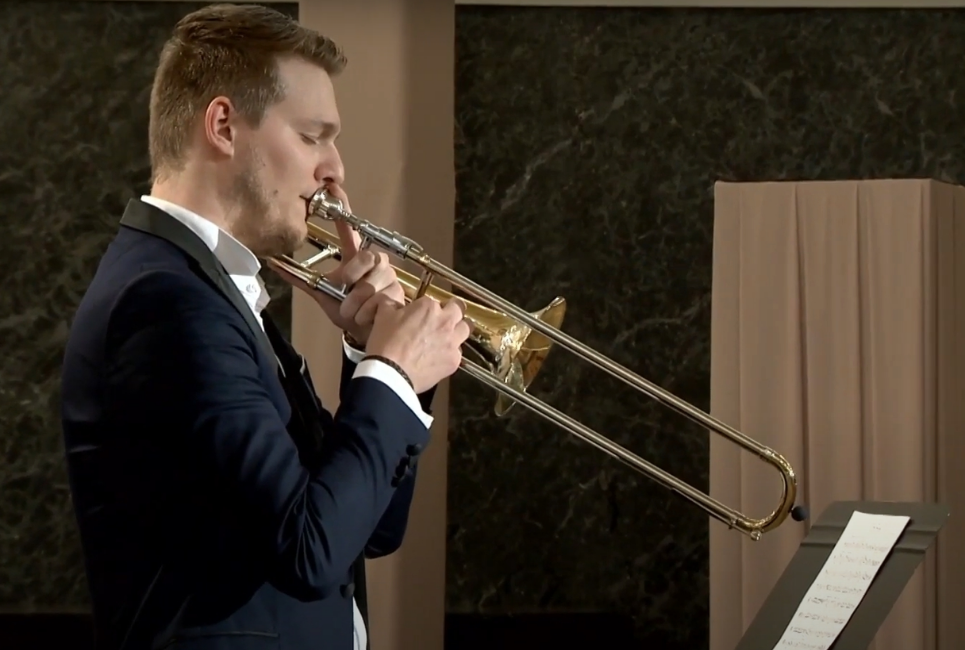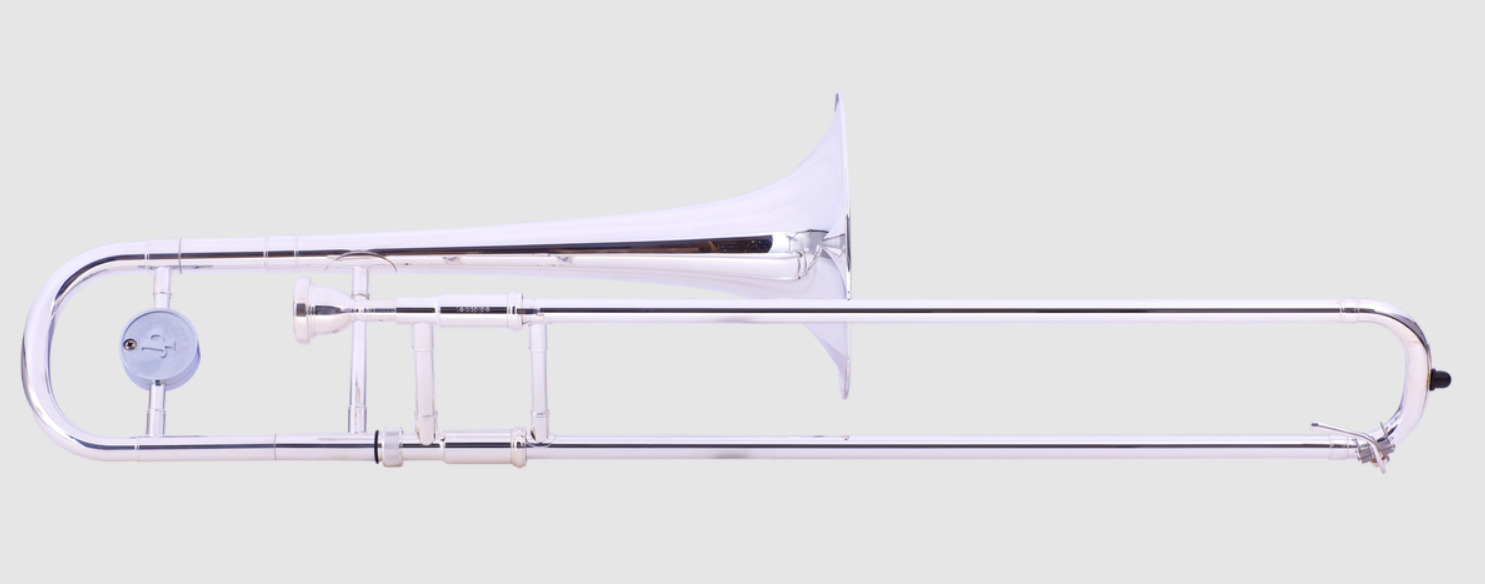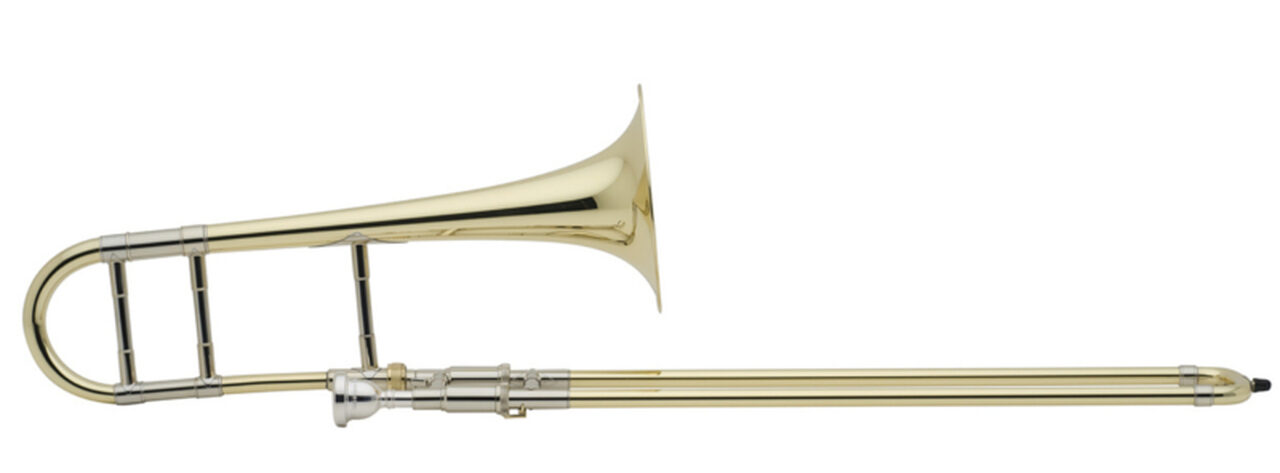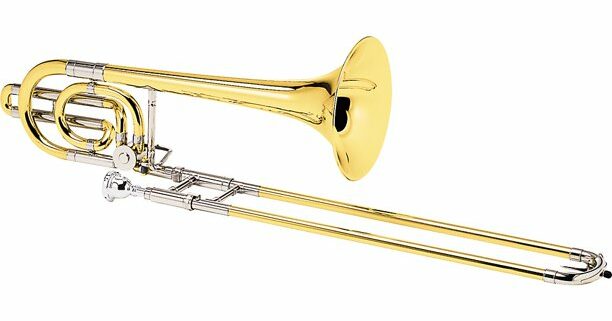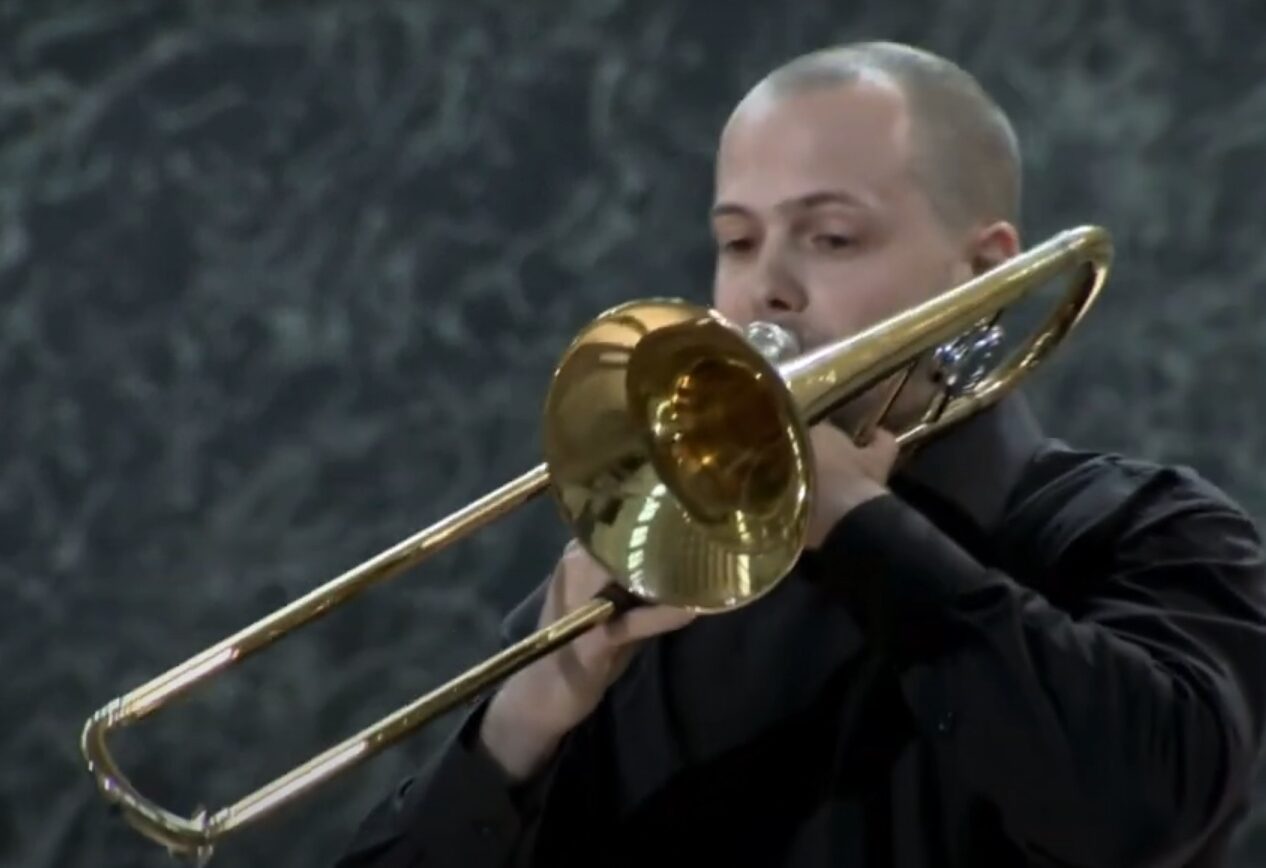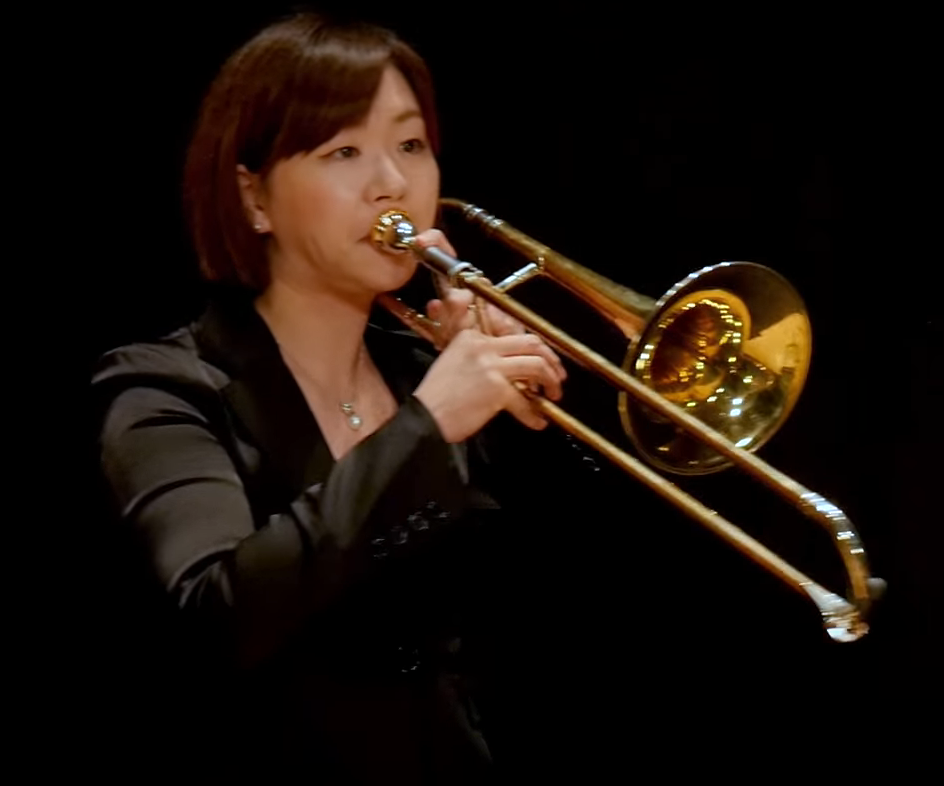- How to Find the Best Alto Trombone - May 31, 2022
- How to Find the Best Bass Trumpets - April 23, 2022
- Best Yamaha Saxophones Brand Guide - April 21, 2022
Maybe you fell in love with the alto trombone’s beautiful high range. Maybe you’re looking to add a period-appropriate instrument to your collection. The alto trombone is a great instrument, but good musical instruments don’t come cheap, so you’d like to make an informed purchase.
I’m a longtime music writer and critic. I’m also a multi-instrumentalist who plays several instruments badly. But those who can’t do can teach, and I’m here to teach you how to find the alto trombone that best suits your needs. Alto trombones are now seen regularly in symphony orchestras, and a growing number of musicians in other genres are discovering what the alto trombone can do.
What can the alto trombone do, you ask? Let Czech jazz musician Jaroslav Zouhar give you a sample:
How I Chose the Best Alto Trombones
When ranking alto trombones, here are some of the factors I considered.
Ability
A professional alto trombonist playing with a major orchestra has very different needs than a young student shopping for their first alto trombone. The best model for that professional would be wasted on that young student. But a musician’s first instrument is the most important one of all since it will be the one on which the student builds a musical foundation.
Cost
Music is not the most well-paying of professions, so I have tried to include alto trombones at different price levels. Until now, it was difficult to find good lower-priced alto trombones. But thankfully, there is a new, inexpensive plastic option available that is great for very young beginners and musicians who just want an alto trombone to play around the house. (Curious? Read on and find out more!)
Genre
Alto trombones are used in everything from Renaissance and Baroque music to modern film and video game scores. I have offered a period instrument for musicians specializing in Early Music genres.
The Best Alto Trombones
Best Alto Trombone for Very Young Students: pBone Mini Trombone
If you want your child to start their trombone career early, the pBone Mini Trombone is an inexpensive instrument suitable for ages 4 and up. Don’t let the pBone’s plastic construction fool you. This is a full-fledged E♭ alto trombone made of durable plastic with a carbon fiber inner sleeve. Even the mouthpiece is plastic, but your child will have no trouble producing notes.
The pBone Mini has a surprisingly full and even sound. It is not as bright and penetrating as a brass alto, but when your 4-year-old learns trombone, that is not necessarily bad. (I say this as someone who bought his 4-year-old a drum set). The plastic construction makes the pBone Mini light so even the youngest musician can play without getting tired.
The pBone Mini’s positions are shorter than a tenor trombone, making them easier to reach for young hands. And the positions are also accurate, so your youngster will be able to use those skills on a more expensive trombone later.
The pBone Mini is not going to carry your student through their performing career. But it slots notes correctly, has a decent tone and will stand up to use and abuse from pre-K performers. Even an adult wondering about alto trombones might find the pBone Mini an enjoyable $175 investment.
Pros
- Inexpensive
- Lightweight
- Sized to be playable even by very young children
Cons
- Fine for practice or very young students, but not really suited to the stage or recording studio
Specs
- Lightweight ABS plastic
- Pitched in E♭ (lower partials)
- 7″ bell
- Weight: 1.8 pounds
- Lockable slide
- Water key
- pBone Mini antimicrobial mouthpiece
- Fabric carry bag
- Recyclable and carbon neutral
Best Mid-Range Alto Trombone: John Packer JP236 Rath E♭ Alto Trombone
There are cheaper Chinese alto trombones on Amazon and elsewhere. But those mass-produced trombones frequently have ill-fitted slides, bad solder joins, and other issues that make them unplayable. And when you try to get a repair or replacement, you’ll find the anonymous reseller has moved on to a new storefront, and your bargain instrument is now an expensive doorstop.
The John Packer JP236 Rath is made in China but designed by British instrument maker John Packer Ltd. in collaboration with famous trombonist and designer Michael Rath. While many lower-priced alto trombones are stuffy and difficult to keep on key, the JP236 Rath is free-blowing and precisely slotted on all seven positions, so you’ll have no trouble hitting the right notes. The JP236 Rath also has a strong lower register, an area where many lower-priced alto trombones fail.
The JP236 Rath is a great choice for a marching band or trombone ensemble. It is also well-suited to professional trombonists who occasionally play alto trombone as a second instrument. At over $1,000, the JP236 Rath isn’t a cheap instrument, but for many trombonists, it will be the last alto trombone they ever need.
Pros
- Consistent sound across all registers
- Removable leadpipe
- Excellent price to value ratio
Cons
- Smaller .481″ bore means the sound can be very bright
Specs
- Key: E♭
- Bell size: High-Grade Brass 178mm (7″)
- Bore: Medium 12.21mm (.481″)
- Water Key: Lever 1
- Body: High-Grade Brass
- Finish: Lacquer (JP236 Rath), Silver Plated (JP236S Rath)
- Mouthpiece: Yes
- Leadpipe: Michael Rath Leadpipe
- Instrument Weight: 1.1Kg (2lb 7oz)
- Weight with case: 4.1Kg (9lb 1oz)
- Box Dimensions: 77x26x29cm (30x10x11in)
- Boxed weight: 6.5Kg (14lb 5oz)
Best Professional Alto Trombone: Bach 39 Stradivarius Series E♭ Alto Trombone
While most famous for trumpets, Bach makes other excellent brass instruments. Bach trombones are popular with professional trombonists who praise their rich sound and powerful projection. Many cheap (and some not so cheap) trombones copy Bach designs. The Bach 39 Stradivarius is an alto trombone for a working musician manufactured in America at Bach’s Elkhart, Indiana factory.
While you can use a tenor mouthpiece if it fits your instrument, you will get much better intonation and a clearer high register using a mouthpiece designed for alto trombone. The Bach 39 also comes with a Bach small shank mouthpiece. Before he made brass instruments, Vincent Bach got his start making mouthpieces. Bach mouthpieces are very highly regarded, and even people who use other brands of brass swear by them.
The Bach 39 retains the beautiful brightness of an alto trombone, but with the projection and force, one usually associates with the tenor. But the, Bach 39 can also play light passages beautifully. Bach’s Stradivarius instruments are noted for their versatility, which is one reason why Bach is found in orchestra pits, jazz halls, and recording studios alike. Because that is important to working musicians. I give the Bach top marks as the best all-around professional alto trombone.
Pros
- Has excellent power and projection
- Comes with the top-notch Bach mouthpiece
- Equally good in soft and louder passages
Cons
- Narrower slotting than many trombones requires careful slide positioning
Specs
- Key of E♭
- 468″ bore
- 6.5″ one-piece yellow brass hand-hammered bell
- Yellow brass outer handslide tubes
- Chrome-plated nickel silver inner handslide tubes
- Clear lacquer finish
- Genuine Vincent Bach small shank mouthpiece
- Wood shell case
Best Symphonic Alto Trombone: Conn 36H E♭ Alto Trombone
Conn is known for its quality control and reliability across product lines. From student to professional instruments, Conn receives high marks for tone, playability, and durability. And while Conn’s 88H is a favorite among tenor trombonists, alto symphonic trombonists swear by Conn’s alto trombones, notably the E♭/B♭ 36H.
Conn’s 36H alto trombone features a rotary valve like those found on bass trombones. Press the valve, and the trombone’s pitch goes down a fifth to B♭, allowing you to play low notes that are normally only playable on a tenor trombone. While you won’t see those notes in most alto trombone repertoire, the B♭ valve gives a bit more oomph to the alto trombone’s lowest register, a common weak point in alto trombones.
The B♭ valve also makes it easier to play trills. You can switch between E♭ and B♭ to make the slide shift between positions less extreme and easier to play. The Conn 36H is found in many orchestras. (Some alto trombonists prefer to do without the B♭ valve and exchange the bottom end and trill valve for a freer blowing valve-free Conn 34H).
Pros
- Rotary valve gives you the complete range of the tenor trombone in an alto
- Conn/Selmer is one of the world’s leading makers of instruments for students and professionals
- Removable leadpipe allows for customization to your tastes
Cons
- Some alto trombone players complain the B♭ rotary valve makes the trombone stuffier and less free-blowing
Specs
- Key: E♭/B♭
- .491/.500″ dual bore
- 7″ yellow brass bell
- Traditional wrap Bb attachment with traditional rotor
- Brass outer slide
- Clear lacquer finish
- C.G. Conn 7C mouthpiece
- 7536C woodshell case.
Best Early Music Alto Trombone: Egger Alto Sackbut in E♭
When it comes to period brass instruments, Swiss instrument maker Egger is one of the world’s best. The Egger Alto Sackbut in E♭ is designed based on a 1670 sackbut built by Hieronimus Starck of Nuremberg. Sackbuts are the predecessor of the modern-day trombone. The bell is smaller, the brass thicker, and the bore more narrow. The sackbut’s tone is also more mellow and rounded. (Sackbuts were largely played in cathedrals and churches where the trombone’s penetrating sound is prone to reverb distortion).
Perhaps the hardest thing for players moving from trombone to sackbut is the bell position. While a trombone’s bell is placed in the third slide position, the sackbut’s bell is placed further forward in the fourth position. Egger can build this alto sackbut with the bell in the third position for those who want a more trombone-like playing experience.
Eggar also offers a traditional Classic model, which uses hand-hammered soldered brass for the instrument body and glue rather than solder for connecting the braces. This makes the fit looser and gives the sackbut an added resonance. And for those with money to burn, the MDC model features silvered decorations and engravings throughout the sackbut.
With prices starting at over $4,000, the Eggar alto sackbut is a serious investment for serious performers. If you are interested in Renaissance music, Eggar makes the finest sackbuts you can buy.
Pros
- Key: E♭
- Beautifully engraved
- An authentic period instrument
- Several options available
Cons
- There will be a learning curve going from trombone to sackbut
Specs
- Bore: 10.0/10.0 mm
- Bell: 94 mm, brass, hand-hammered
- Inner slides: German silver (nickel silver), chrome-plated;
- Sleeves decorated
- Garland and bell stay engraved.
A Brief History of the Alto Trombone
Renaissance ensembles included a “high sackbut,” and composers like Handel and Beethoven frequently used the alto trombone in their music. For a long time, musicologists thought alto trombone pieces written by Leopold Mozart were played on horns since the lines were too complex for a slide instrument. Only recently have alto trombonists begun playing these works Mozart’s father wrote for court musician Thomas Gschlatt in regular repertoire.
The alto trombone covered much of the range of the viola or an alto vocalist and handled many of the high parts in Renaissance sackbut ensembles. But the alto trombone’s popularity plummeted precipitously, and for over a century, alto trombones were rarely seen in orchestra pits.
What happened?
The modern tenor trombone, which we today call simply the “trombone,” has a wide range. A skilled trombonist can play almost all music for alto trombone on a tenor. By the 1840s, alto trombones had fallen out of fashion. The alto/tenor/bass combo used for centuries by sackbut and trombone players was replaced by multiple tenor trombones.
But from the 1960s onward, musicians and conductors became increasingly interested in period-accurate instruments. Musicians noted the alto trombone had a brightness and ease to the higher notes that tenor trombones lacked. The different overtones of an alto trombone added an extra richness to massed trombone parts than multiple tenor trombones.
Today alto trombones are regularly seen in concert halls. Soundtrack recording studios and many first trombonists double on alto trombone as required. If you’re looking for an alto trombone, there are many to choose from. Figuring out which one is right for you can be a challenge. This is where I come in.
Things to Know about Alto Trombones
If you are looking for an alto trombone, you probably already play tenor trombone. While there is some call for alto trombones in marching bands, most trombonists get their start on the alto’s big brother.
If you are looking for a first trombone, you will do better starting with a regular tenor. The tenor trombone repertoire is much larger, and there is more demand for tenor trombone players.
The alto trombone is pitched in E♭. Any note you play on an alto using B♭ tenor trombone slide positions and embouchure will sound a fifth higher. This means that you will have to learn new slide positions. And because the alto trombone is shorter, the positions are closer together and hence easier to miss.
You will also have to learn a new clef. Most alto trombone music is written using an alto clef (????). While it may take some time to get adjusted to the new clef, much as it takes time to master the switch from bass to treble clef, you’ll soon be reading alto clef music as easily as any other sheet music.
Frequently Asked Questions (FAQ)
Answer: The alto trombone and the viola are the only orchestral instruments whose music is written in alto clef (????). The alto clef puts C4 (middle C, or the fourth C on the piano) in the center of the stave on the third line. In treble clef (????), C4 is on the first line below the stave, while in bass clef (????), C4 is on the first line above the stave. The alto clef is also used for the viola da gamba and viola d’amore in period music and in many works written for a countertenor’s voice.
Answer: If you played an E♭ clarinet, you would use the same fingerings you use on your B♭ clarinet. When you play sheet music for a B♭ clarinet, the notes sound a full step lower than the written note. Play the same note on an E♭ clarinet, and it sounds a minor third higher. The arranger handles the key changes when transposing the music, so a clarinetist can use the same fingerings when switching between instruments.
Unfortunately, music for trombone is written in concert pitch. So the slide positions for an E♭ alto trombone will be different than the positions on a B♭ tenor trombone.
Answer: The alto trombone is pitched a fifth higher than the B♭ tenor trombone. Between E♭3-E♭5 is the alto trombone’s tessitura or natural range. Skilled trombonists can use their embouchure and breathing to go higher or lower on an alto trombone. The concert repertoire for the alto trombone is generally written in a range between A2 and G5.
Conclusion
For most trombonists, the Bach 39 Stradivarius will be the best alto trombone. Bach’s trombones are famous for their great sound, and the 39 will serve you well through a lifetime of playing.
If you are looking for a starter instrument for a very young player, r if you just want to try out an inexpensive alto trombone to see how you like the instrument, the pBone Mini is tough to beat.
For symphonic music trombonists, the Conn 36H is the best choice, thanks to its B♭ rotary valve and Conn’s long history in orchestras.
If you are an Early Music musician looking for a period-appropriate instrument, Egger’s alto sackbut is one of the finest in the world.
Whatever alto trombone you choose, here’s to many long hours of musical enjoyment in an alto clef! Happy playing!
Looking for more interesting readings? Check out:

